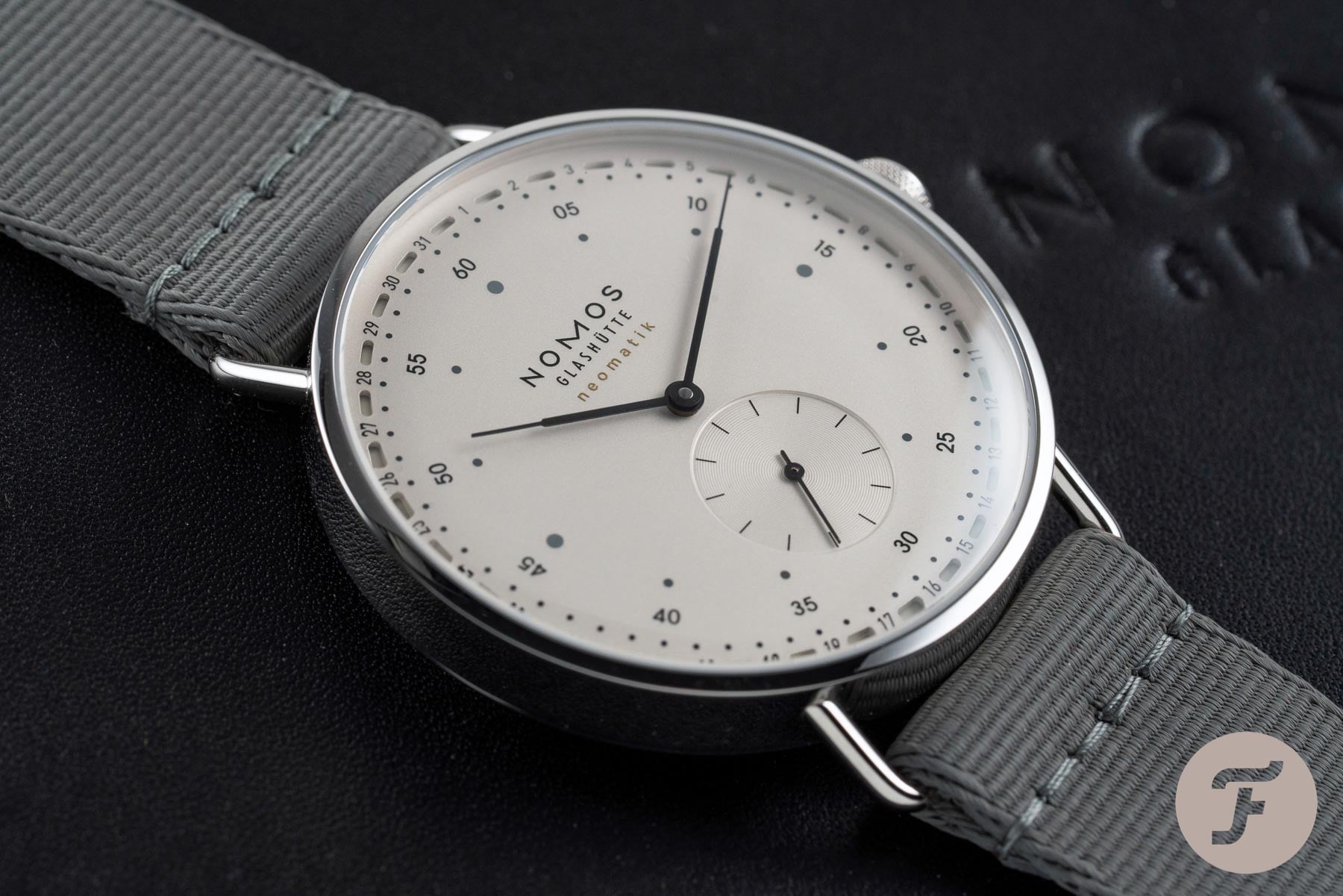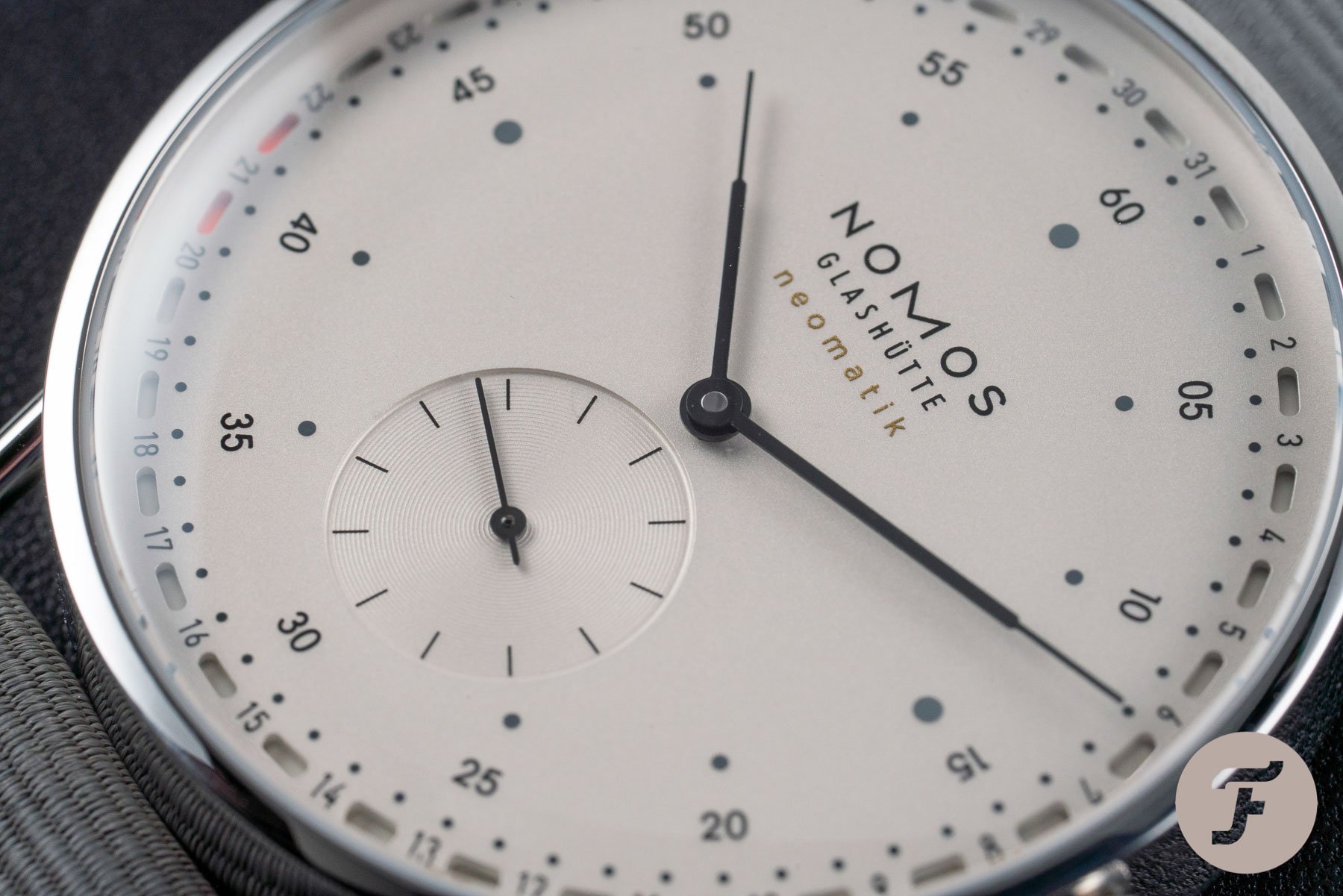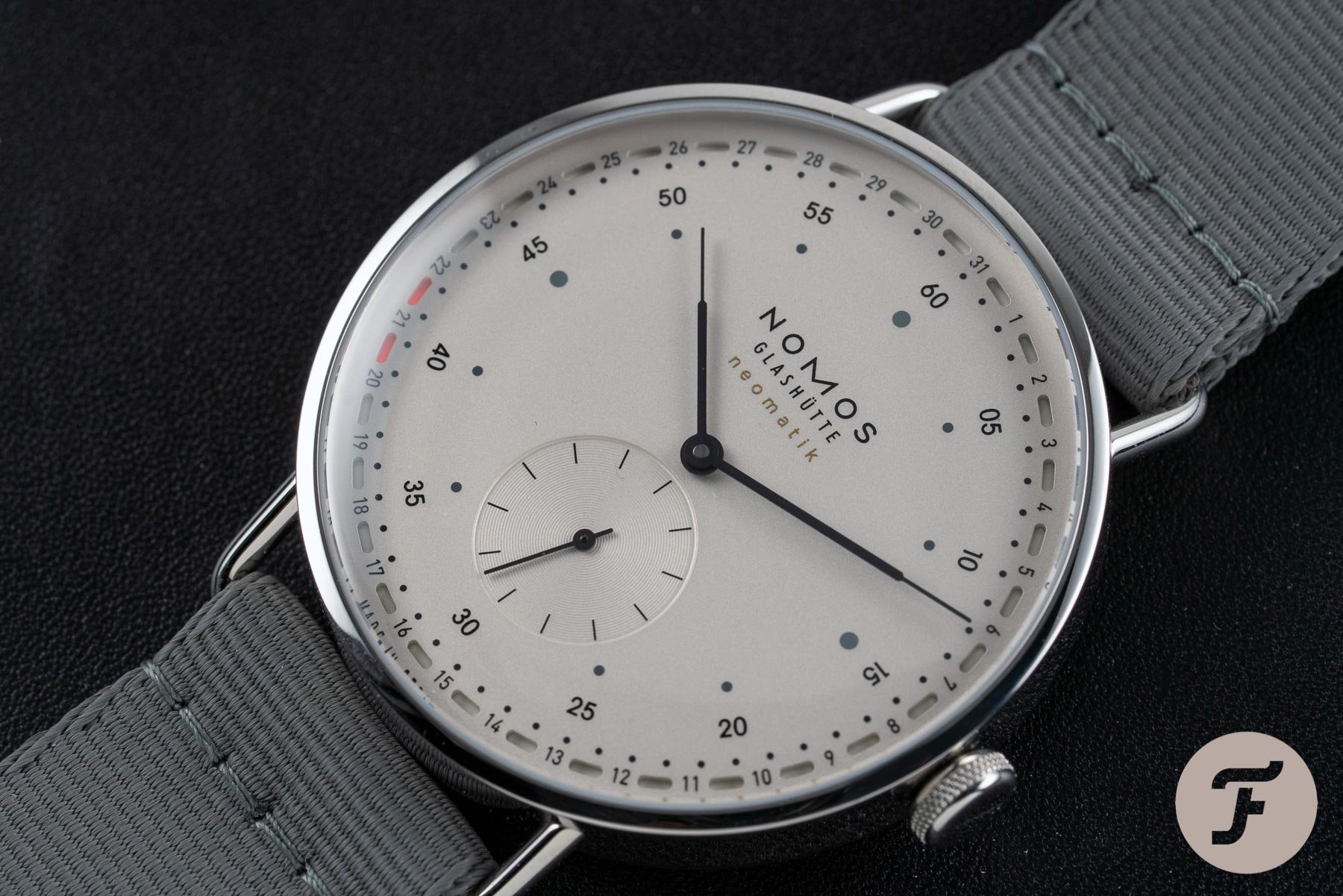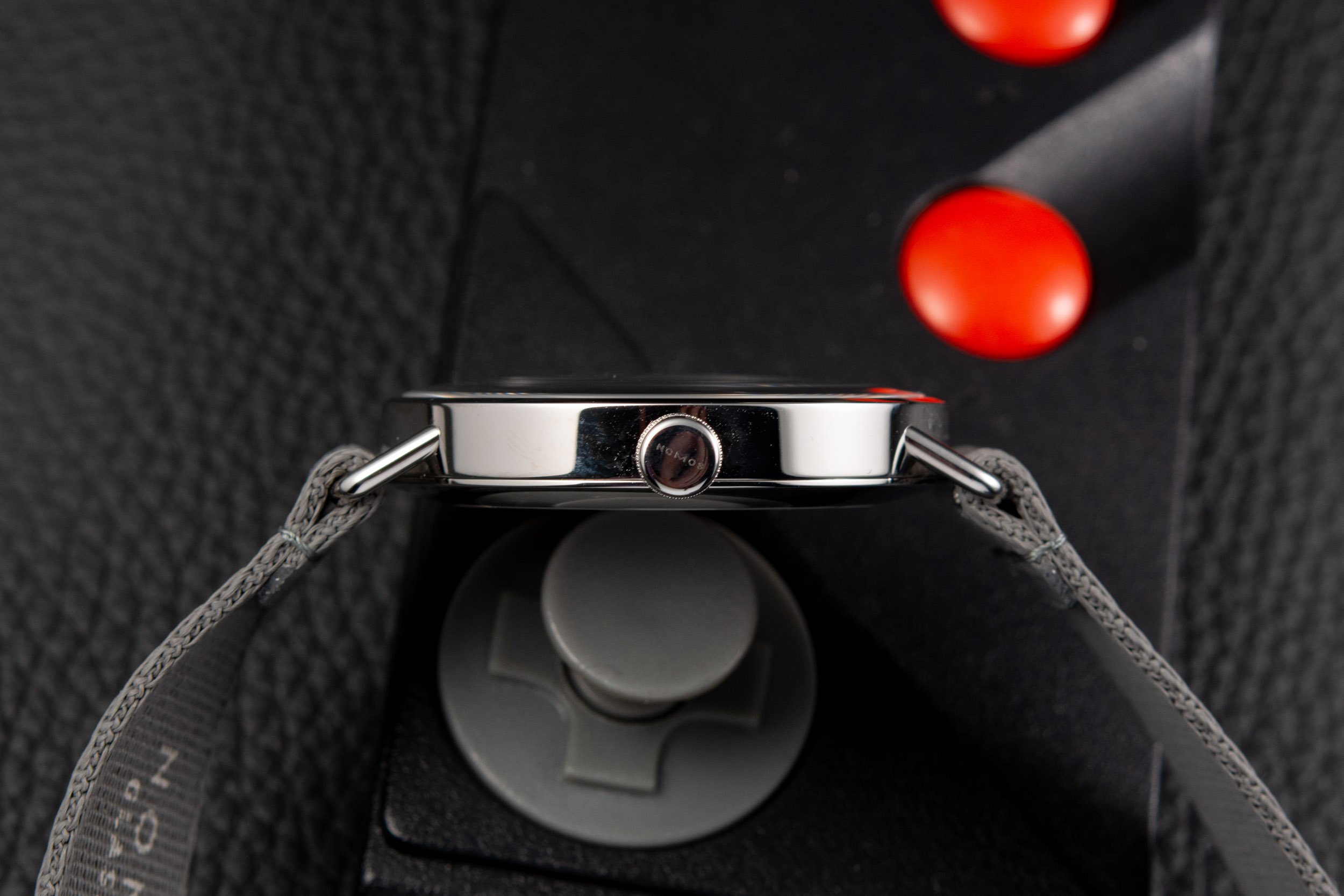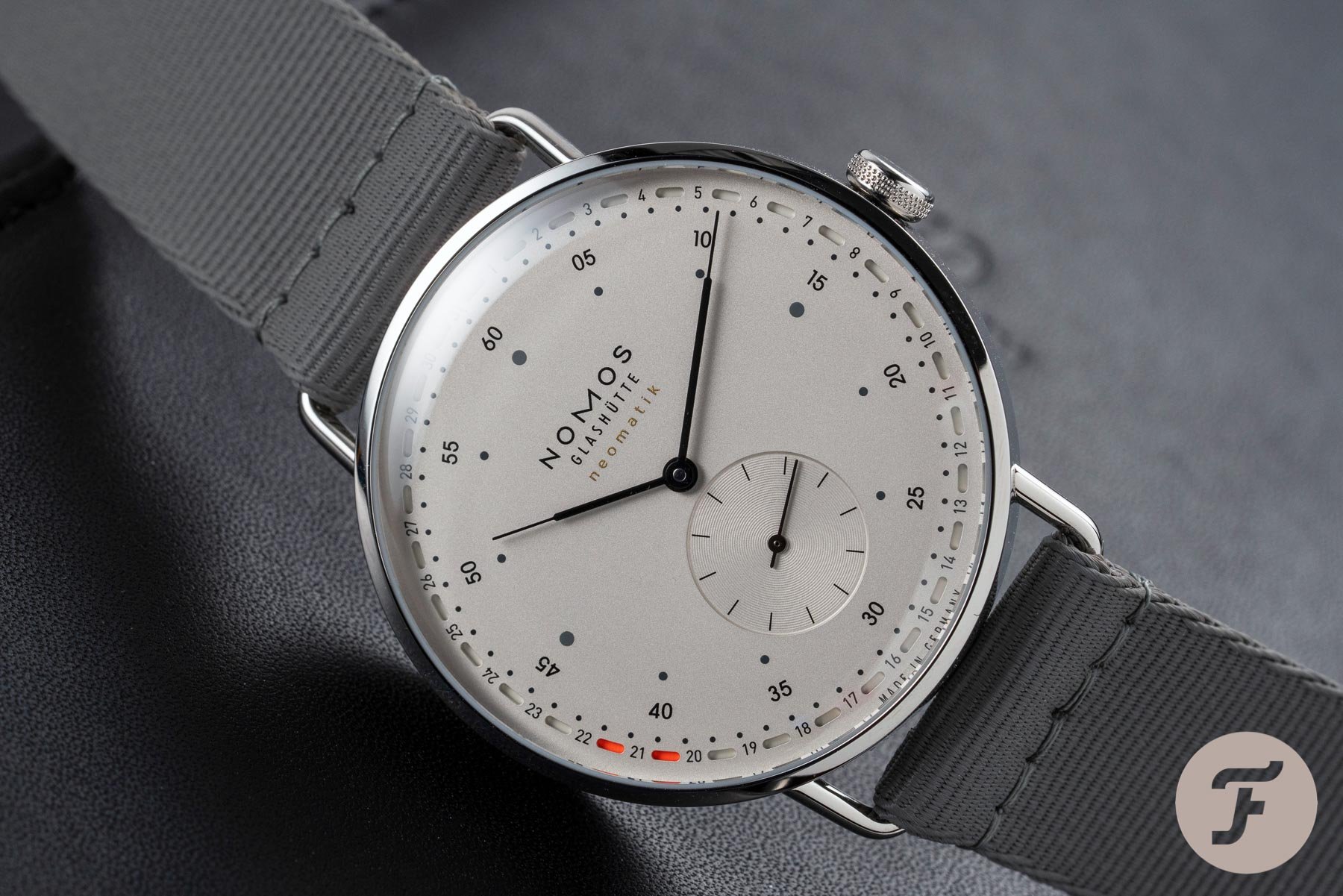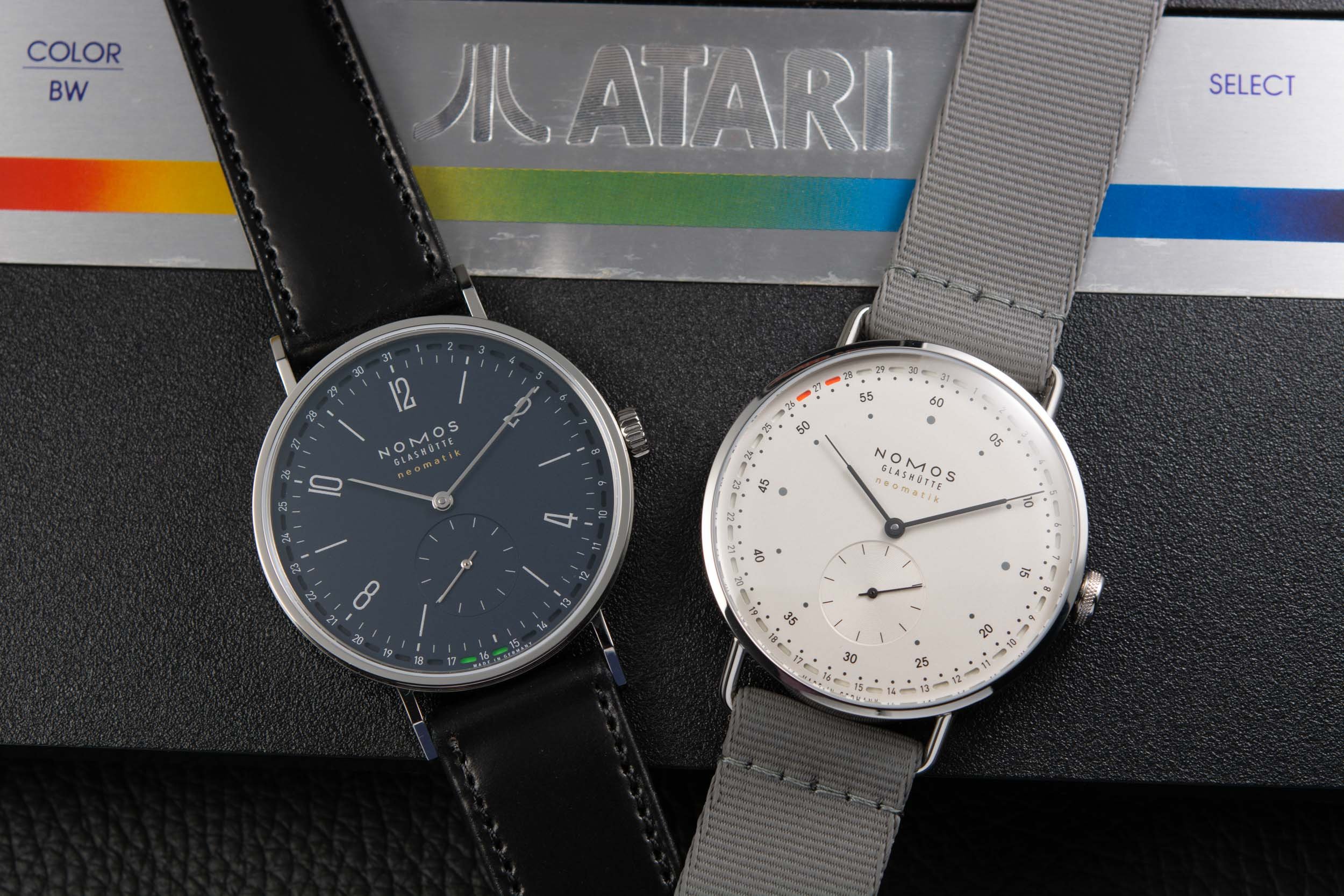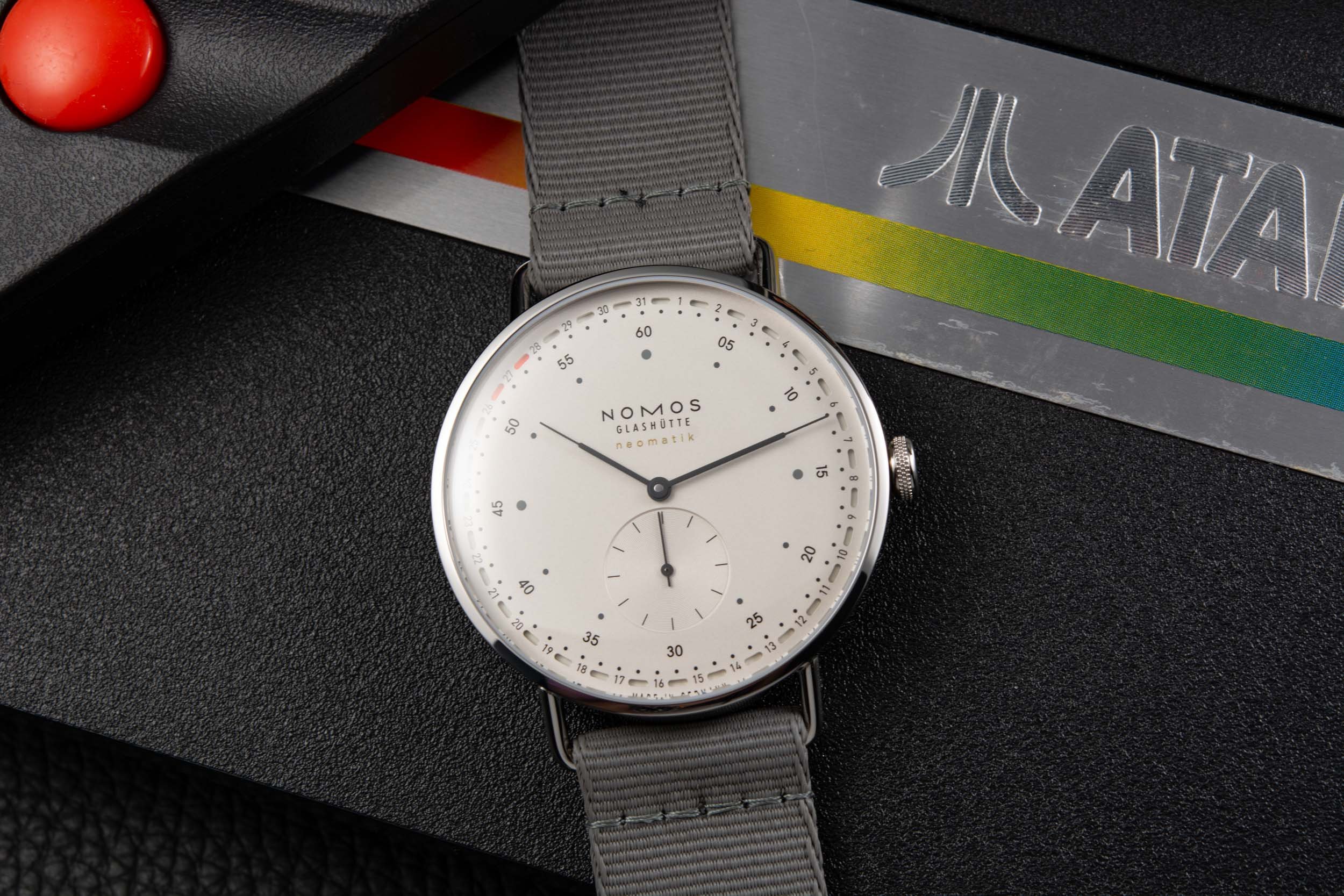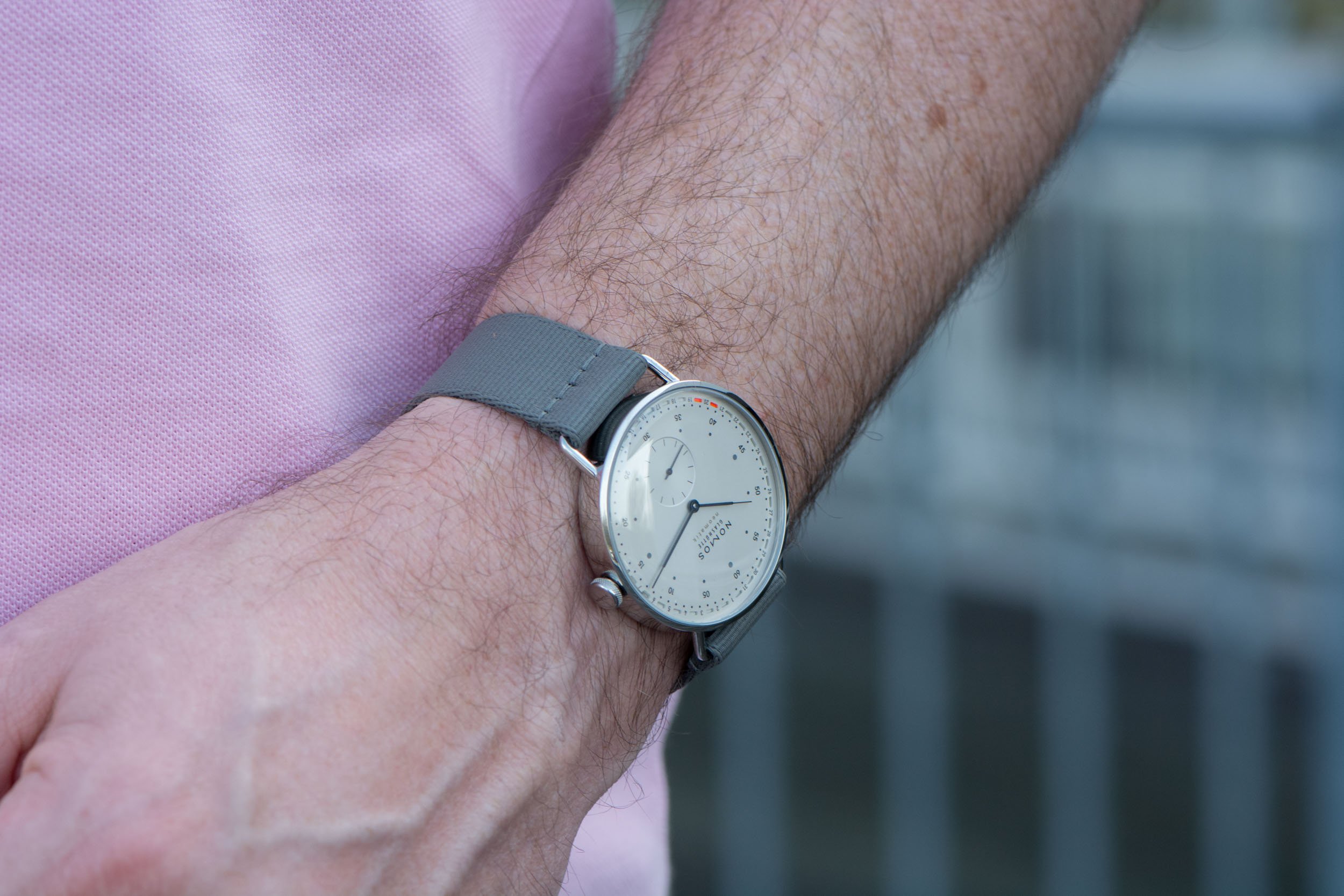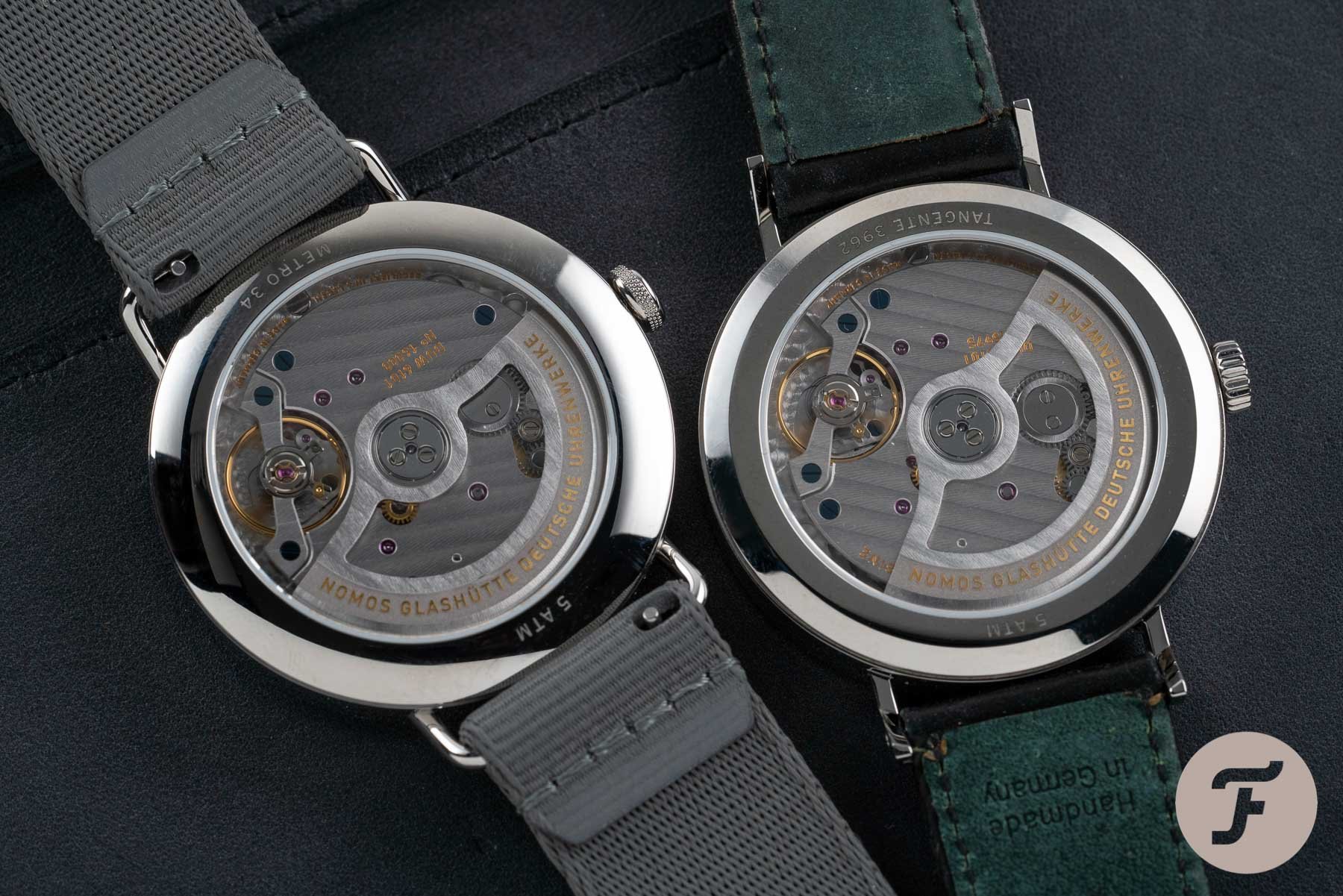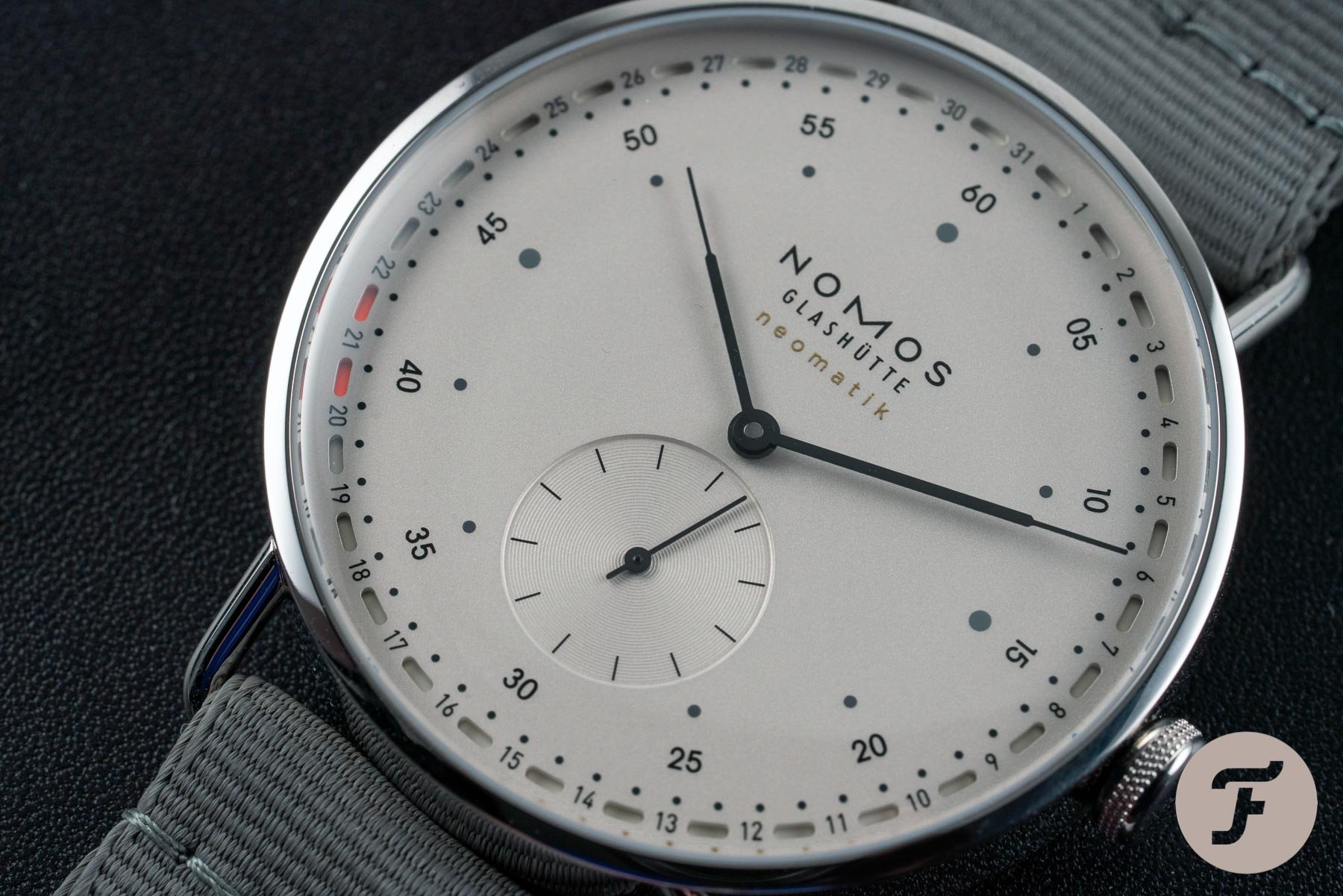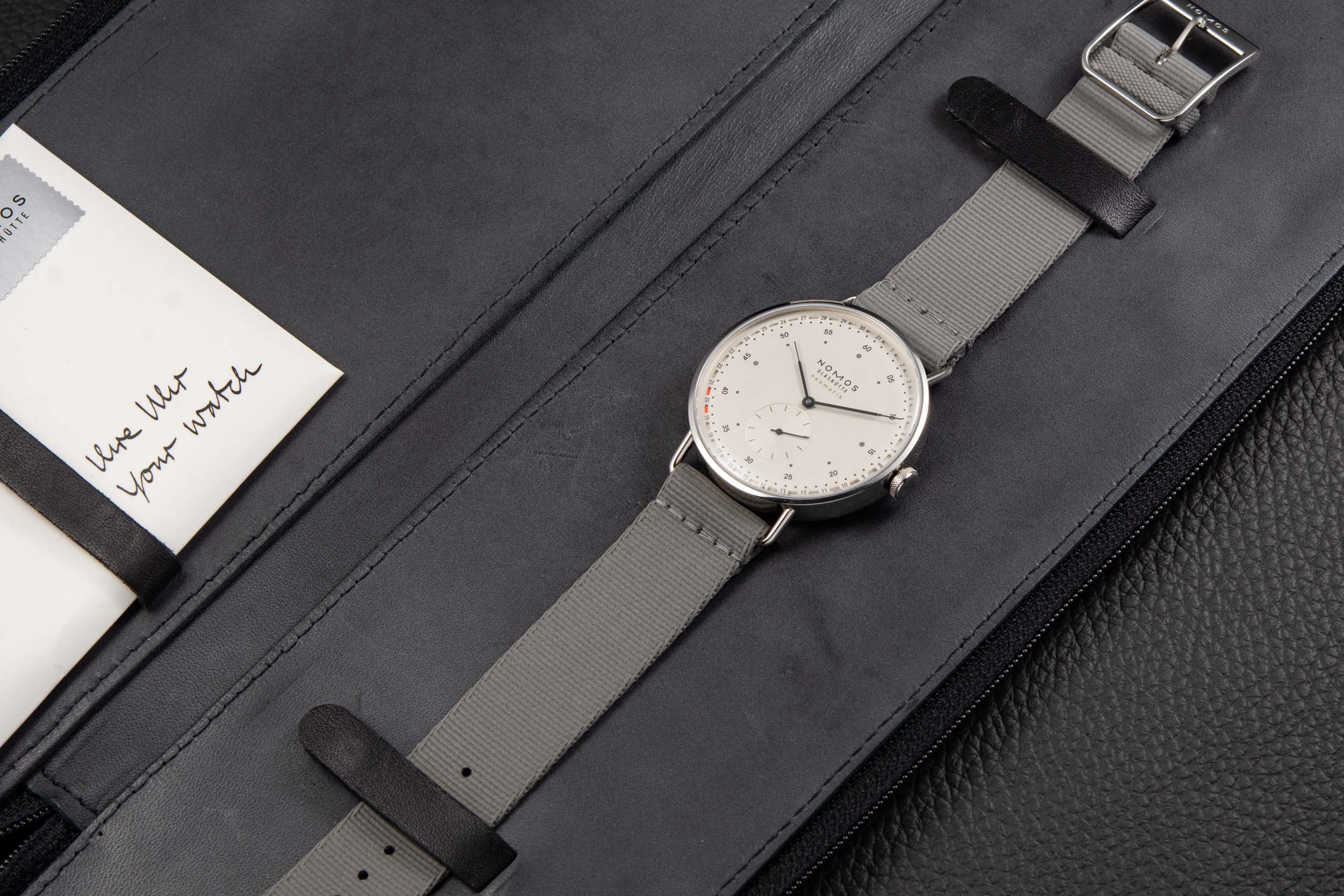Assessing The NOMOS Glashütte Metro Neomatik 41 Update From A Technical Perspective
During the Watches & Wonders fair, we covered the new NOMOS Glashütte Metro neomatik 41 Update in one of the industry’s earliest hands-on reviews (thanks NOMOS). In that review, Jorg took the lead and shared his thoughts about the new Metro. Now it’s my turn to analyze the star behind the show: the in-house DUW 6101 neomatik date caliber.
If you’d like to read Jorg’s thoughts on this model and how he fared with it on his wrist for a week, you can find the first article here. Before I dive into what makes the DUW 6101 special, I’d like to share my thoughts on the same subject:
Why we needed this
The Metro has always been a favorite line of mine. Despite that, I don’t own one. Truth be told, I rarely came close to adding one to my collection. I was rapt by the 1101 Metro Power Reserve, of course. I mean, who wasn’t? The model that birthed the collection has never been topped. There have been some truly gorgeous models in the Metro canon. The 35mm nachtblau neomatik was really special, for example. In my opinion, however, none came close to toppling team Metro’s titan.
…welded wire lugs fitted with quick-release straps.
At 37.5mm, the 1101 Metro Power Reserve represented an odd set of proportions. Its simple, disc-shaped case has always been attached to the wrist via welded wire lugs fitted with quick-release straps. While we normally extol NOMOS watches for having a huge visual impact for their size (which they almost exclusively do), that doesn’t always translate into wearability.
Off the wrist, the Metro collection follows the same principles of visual impact that the rest of the NOMOS catalog does. However, unlike the Club or Orion models (especially), the Metro comes back to Earth with a thud as soon as it hits the wrist. While the watch face retains its impact, the stout, slight lugs that offer an almost immediate drop-off from the case mean that the Metro wears very small for a NOMOS.
A perfectly proportioned object becomes a perfectly proportioned watch
When Mark Braun designed the Metro, he must have known he’d smashed it out of the park. If his effort were a baseball, it would be bouncing around the car lot right now. The Metro Power Reserve became the darling of NOMOS Glashütte’s transitional generation. It was so delightfully proportioned and so delicately enlivened by color, no one seemed to gripe at the almost €3,000 ticket price (which was loads for a NOMOS back in the day).
In fact, the one thing that annoyed people about the NOMOS Glashütte Metro Power Reserve was having to wait for it. For more than two years, the Power Reserve was on a 10-month waiting list. And I don’t mean the kind of waiting list you’ll find in your local Rolex dealer, resting beneath the counter atop a huge pile of “unavailable” professional models; I mean a true, honest-to-God, where-can-we-find-one-of-these-things kind of waiting list.
…this poster child was made for the product photographer’s lens.
It got so crazy that NOMOS dedicated one September to making barely anything but Metro Power Reserves to clear the backlog. It was, in short, just the success story the brand needed as its watches climbed the pricing chart on the back of its massive internal investment in transforming itself into a manufacture. There can be no doubt that this poster child was made for the product photographer’s lens. But was it made for the wrist?
Well, yeah, obviously, but not all wrists…
Of course, the Metro wouldn’t have sold so many units had it not looked damn fine on the wrist. But I maintain the watch appealed to a different kind of clientele from the mainstream watch-buying clan. The NOMOS Glashütte Metro Power Reserve was an artistic triumph. It worked on all kinds of wrists. It worked for men and it worked for women. Youthful watch lovers and seasoned pros admired it. And yet it seemed lost in the middle of the market. It seemed not to resonate with the bulk of the watch-buying public that too often finds itself distracted by shiny things from Rolex, Breitling, or Audemars Piguet, for example.
It was cool, but it wasn’t seismic.
The Metro line needed a bit of muscle. It needed it outside and inside. The Power Reserve movement was respected, but it was really a simple Alpha caliber with a neat — a very neat — dial side modification. It was cool, but it wasn’t seismic. The release of the DUW 6101 at Baselworld 2018 was.
What is the DUW 6101 and where did it come from?
The DUW 6101 is NOMOS’s first slimline automatic caliber with a date. It was released to much fanfare at Baselworld 2018. It followed the DUW 3001’s release in 2015. The 3001 was NOMOS’s first “neomatik” movement, intended to be the foundation for a new era of German watchmaking. At just 3.2mm thick, the DUW 3001 was a revelation. It gave NOMOS automatics the thinness for which its manual watches were so often lauded. However, it lacked a date complication.
…a peripheral date complication that added just 0.4mm to the height of the 3001…
NOMOS never does things the easy way. Perhaps that is why things move a little slowly in the sleepy Saxon town the brand calls home. Rather than simply building a dial-side complication on top of the 3001, NOMOS decided to invent a peripheral date complication that added just 0.4mm to the height of the 3001, while greatly expanding the movement’s diameter so that it could be used in larger cased watches and actually fill them properly.
Prior to the release of the DUW 6101, NOMOS watches with a date had always relied on a rather odd, somewhat time-consuming, but inherently safe mode of advancing the date. NOMOS watches used to use a “back and forth system”. This required owners to move the time to just past midnight and then back to around 9 o’clock. This would reload the date mechanism.
In many modern automatic watches, the date is set via a “quick-set” mechanism, which requires the setter to pull the crown out to its second position and to rotate it in a clockwise direction. The date wheel then jumps forwards rapidly. While that sounds entirely desirable, most (as in almost all) of these mechanisms have a potentially fatal flaw…
Fixing the flaw
If the time happens to be set between (roughly) 10 pm and 2 am when you attempt to operate the quick-set date function, you risk ripping the teeth from the date change wheel and bringing all of hell’s fury upon you courtesy of a stressed out, overworked watchmaker that really doesn’t have time for your nonsense. But why does this happen? During those hours, the date change hammer is already engaged with the date wheel teeth. It has not built up the necessary tension to flick the date forward but it is in position nonetheless. Trying to scroll the teeth through it is just about as advisable as trying to drive a car through a wall (don’t).
NOMOS really wanted to spare your blushes. As such, the brand spent four years developing a mechanism that uses a two-level slipping clutch to eliminate the possibility of tension build-up twixt the hammer and the date wheel teeth. And an added bonus is that this quick-et date mechanism works forward and backward. That is seriously uncommon. In fact, even if I stretch myself, I’m confident I couldn’t name another 10 watches that do that. Cue the comments section erupting with at least 10 that do…
A worthwhile investment
Those modifications, and the fact that this movement is 95% in-house (NOMOS doesn’t make its own jewels which almost accounts for the 5% drop-off), make the DUW 6101 a seriously interesting caliber. It is a worthwhile invention and a worthwhile investment. To make it enjoyable, however, you just need to find it wrapped in an attractive skin.
To me, this NOMOS Glashütte Metro neomatik 41 Update is possibly the best-looking DUW 6101-powered watch yet (with the Tangent “Seahawk” I reviewed on Saturday a close second). I also think that this is the best Metro yet. The design just works so well with the date display. I understand why NOMOS stayed away from this date format with the Orion and the Ludwig (and especially the Autobahn, of course), but here it feels right at home. Even better is the way the Update complication makes the position of the going seconds sub-dial feel so much more balanced than it does on some of the other larger models.
So why should you care about this watch? At €3,500 it seems unbelievable value next to its range mates. But that’s what you get after years of improvement. The products get better and better value as the brand gets better and better at what it does. Mad as it may seem when comparing NOMOS today to NOMOS in 1990, but what this brand seems to do right now is innovate. And it does it as well as the very best. Learn more about NOMOS Glashütte here.
This is a preferred position post. Learn more.

